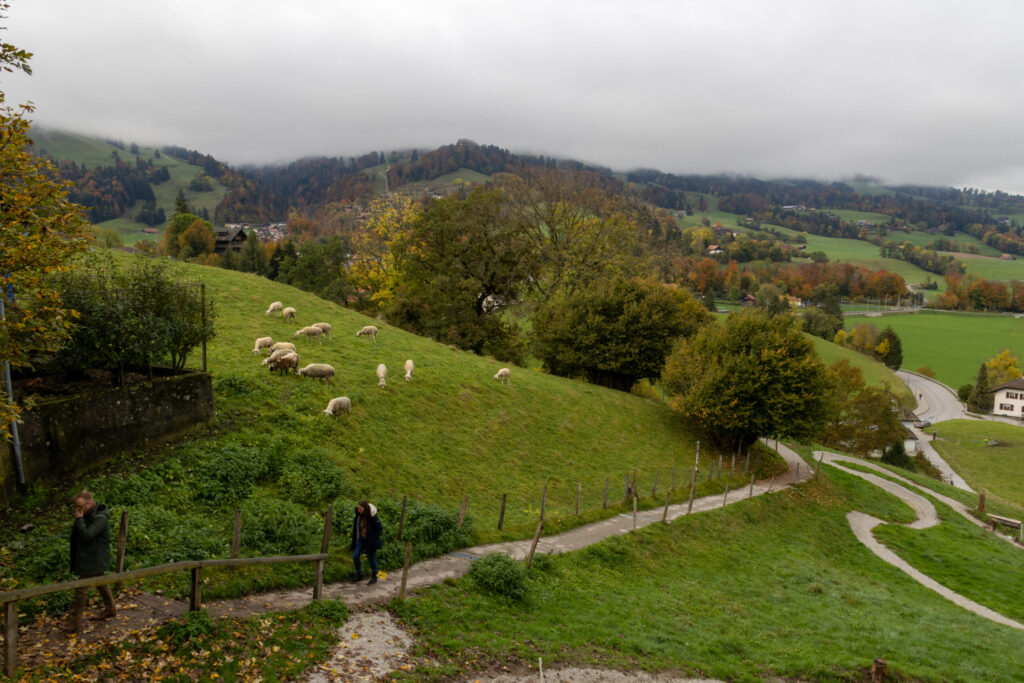
Switzerland in the year 436 lay beneath the crumbling weight of a fading Roman Empire. Germanic tribes such as the Vandals, Alemanni, and Burgundians were steadily advancing, overtaking Roman settlements and reshaping the cultural landscape. The region—still centuries away from becoming the nation of Switzerland—was caught in a tide of transformation. Roman gods like Jupiter and Mercury coexisted with oral traditions of Germanic and Celtic myth: tales of dragons, giants, and water nymphs whispered through valleys and across mountain peaks.
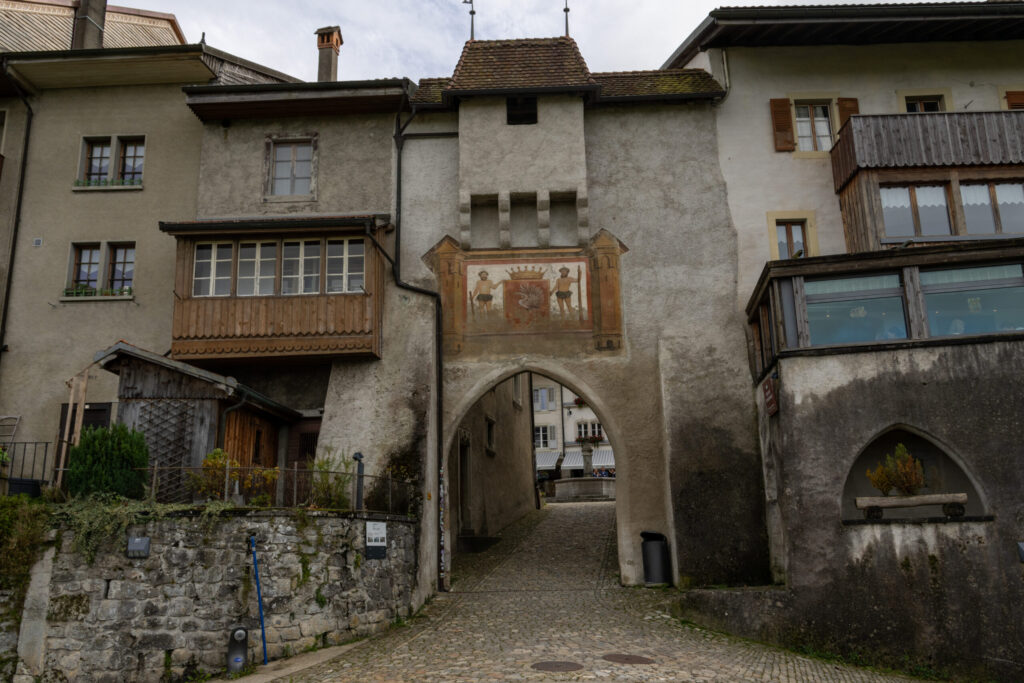
It is against this backdrop that the legend of Gruyères begins, with a Vandal warlord in search of new beginnings. Traveling through a lush alpine valley along a migration path of long-necked cranes, he was struck by the sight of one of these majestic birds—called grue in French. Taking it as a divine sign, he chose to establish his settlement atop a hill overlooking the Sarine River and dense forest below.
While no historical record confirms the existence of Count Gruerius, his legend endures in the medieval village, where the iconic crane—emblazoned on the Gruyères coat of arms—seems to watch over visitors as they walk on the cobblestone streets.
- Rest and relaxation at Hotel Cailler and the Gruyères Thermal Baths
- Taste snozzberries at Maison Cailler
- Witness artisanal cheese production at the Fromagerie d’alpage de Moléson
- And FDA-approved cheese production at La Maison du Gruyère
- HR Giger Museum
- Château de Gruyères
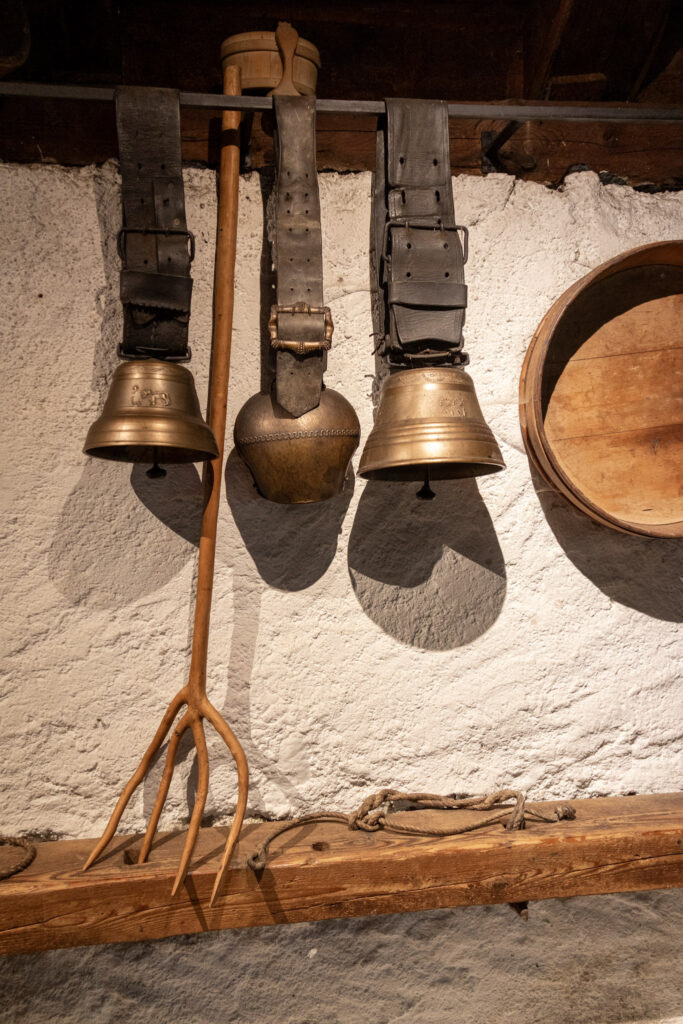
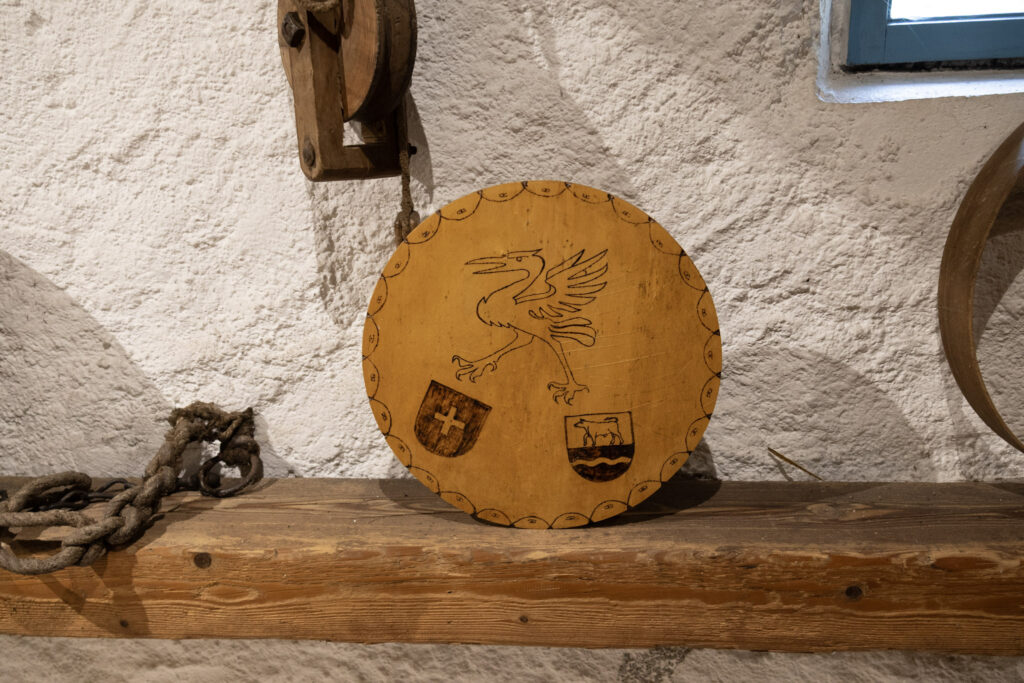
Rest and relaxation at Hotel Cailler and the Gruyères Thermal Baths
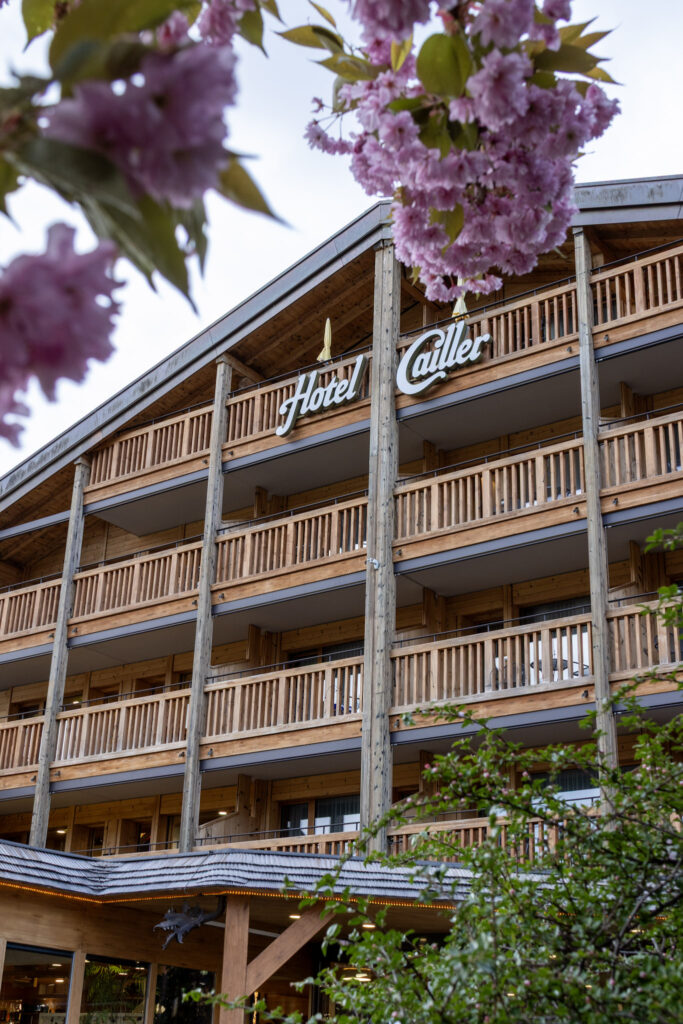
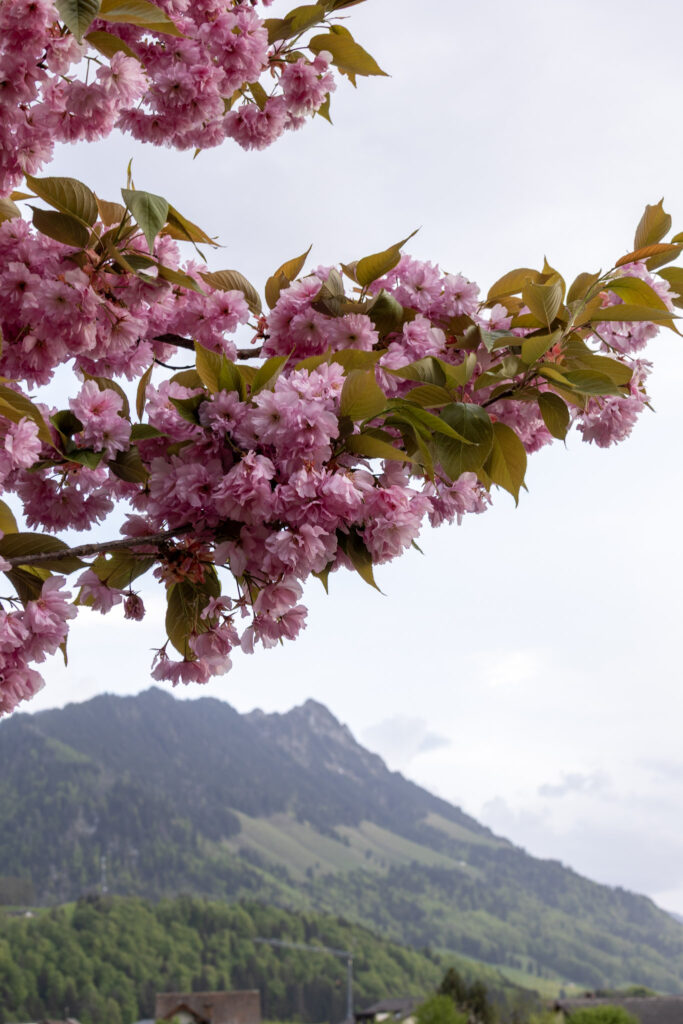
I woke up at the time of day when deer were grazing in a meadow within view of the Hotel Cailler, clouds softly sweeping over the pine trees, commencing their climb uphill. The air smelled of firewood, with reverberating echoes of Sunday church bells in the . In this otherworldly corner of the universe, the softest sound can be heard, even the soft brush of a sparrow zipping past our wooden balcony.
Our base for the weekend was the Hotel Cailler, a four-star hotel located within a 15-minute drive (or 30-minute bus) from the medieval village of Gruyères and a 12-minute distance from the Maison Cailler chocolate museum and factory.
Like numerous hotels in Switzerland, the Hotel Cailler plays on its strength: Alpine charm. Rustic wooden ceilings and floors with touches of red hues and Swiss folkloric deigns are paired with luxury furnishings from our more modern world.
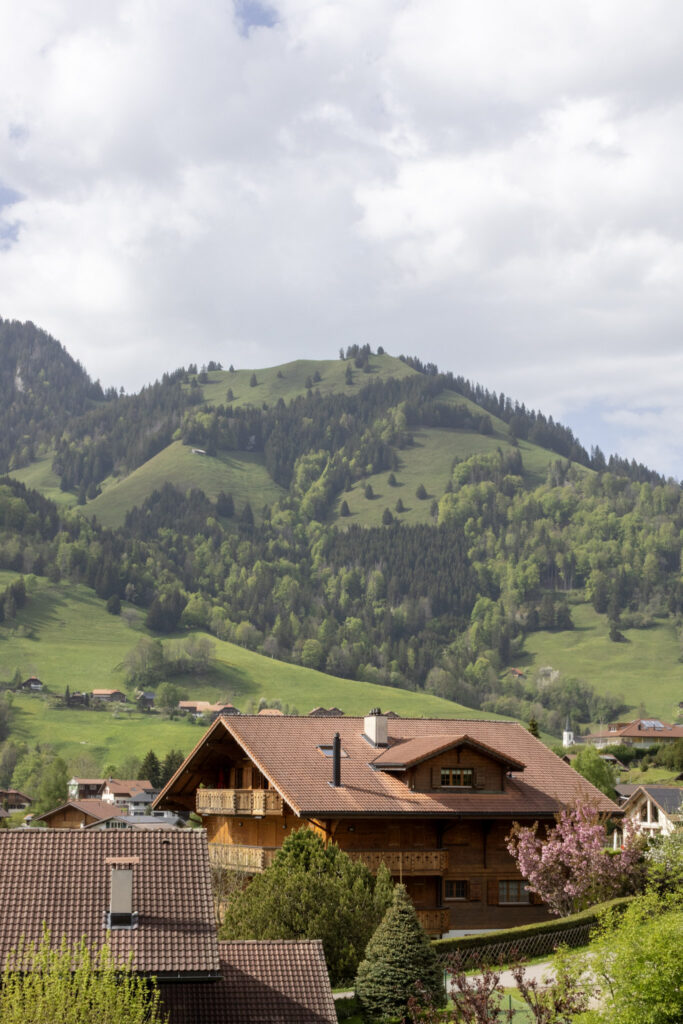
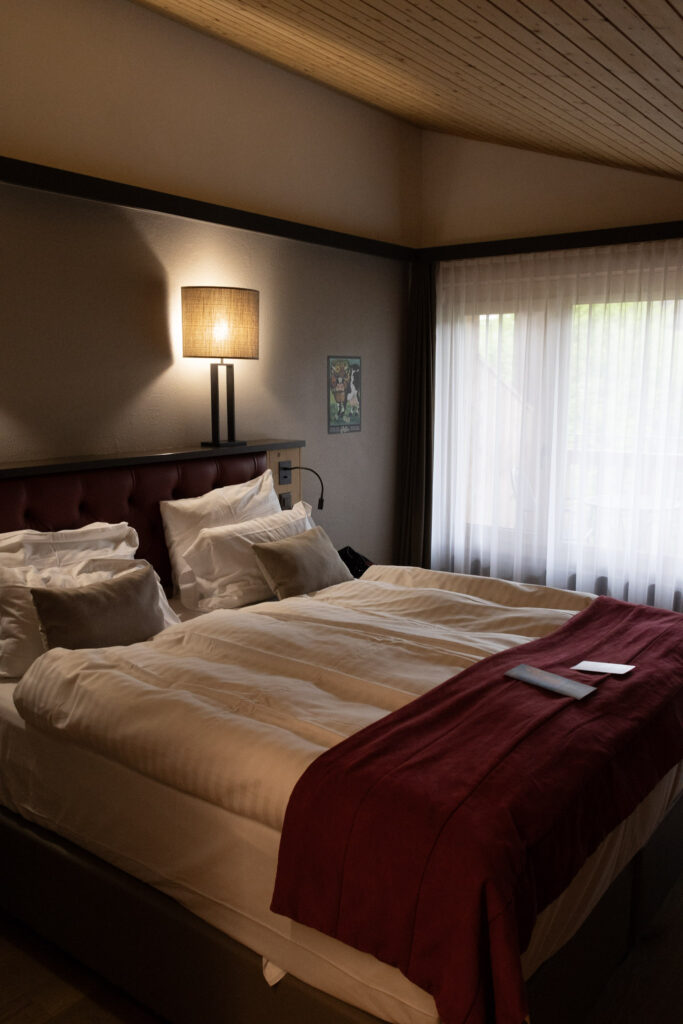
A highlight of staying at Hotel Cailler is its partnership and subsequent underground tunnel leading directly to the Gruyères thermal baths, included in the price of the room reservation which allowed us to skip long lines. Two large outdoor heated pools and one indoor pool at 34°C (93.2°F) allow visitors to gently float while gawking at the mountains ahead. The natural spring water appeals to the masses – bringing in weekend crowds from tattooed twenty somethings to senior-aged couples.
Hotel Cailler: Gros-Plan 28, 1637 Charmey | Website: https://www.hotel-cailler.ch/en/
Gruyères Thermal Baths: Gros-Plan 30, 1637 Charmey | Website: https://les-bains-de-la-gruyere.jimdosite.com/
Prices of the Gruyères Thermal Baths in 2025 (please be informed that it is not possible to reserve entry in advance):
- Adult weekdays: CHF 30.-
- Adult weekends & holidays: CHF 32.-
- Children aged 5 to 15: CHF 16.-
- Children under 5: Free
Taste snozzberries at Maison Cailler
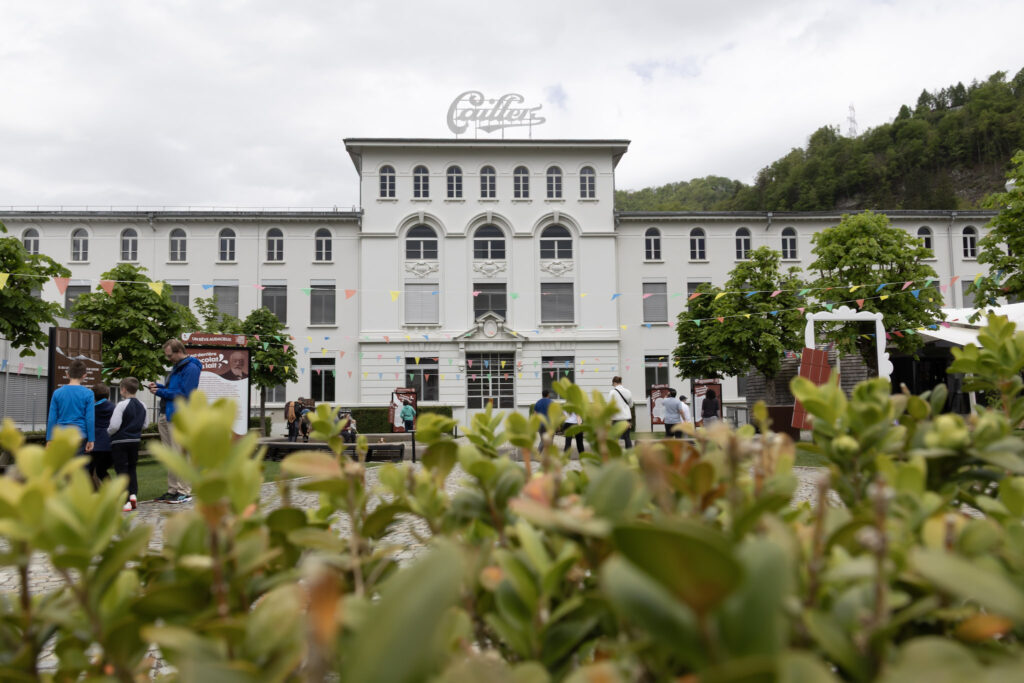
We began our journey at Maison Cailler in a large, dark elevator.
“Will this burst through the roof?” I thought to myself, imagining Gene Wilder’s eyes aglow in a sugary madness.
Instead, we began a slow descent past walls adorned with ancient Aztec designs, embarking on a journey through eight different doors—each revealing a chapter in chocolate’s evolution, from its mysterious origins to its revolutionary transformation with fresh Swiss milk. Chocolate has long held a spellbinding allure—so much so that it was once believed to be poisonous. Legend even claims that Marie Antoinette requested a final cup of hot chocolate before her execution.


Buses of international tourists and a full parking lot during our visit in May illustrate the universal appeal of chocolate. An ideal spot for families, adults will also feel a childlike giddiness when seeing chocolate being produced on futuristic machines on an assembly line, and an all-you-can eat chocolate buffet at the end of the exhibition.
As the Maison Cailler museum and chocolate factory brings in large crowds, reserving your spot in advance is highly encouraged (reserve your visit here).
Reserve your tickets: https://boutique.cailler.ch/content?lang=en | Address: Rue Jules Bellet 7, 1636 Broc
Prices in 2025:
- Adult: CHF 17
- Student/senior/disabled: CHF 14
- 0-5 years old: free
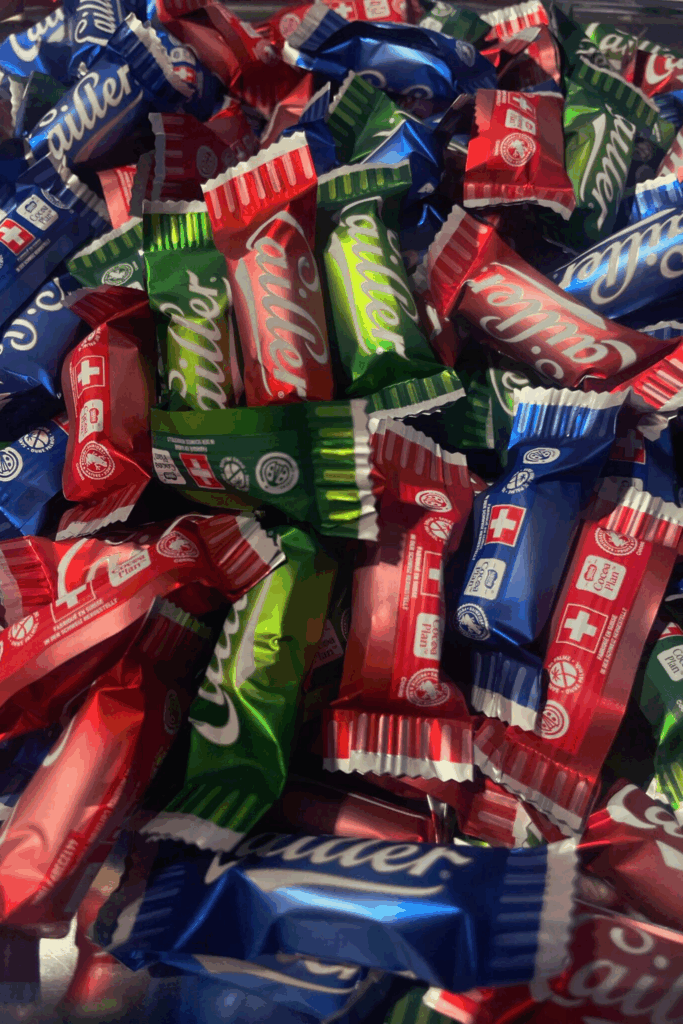
Witness artisanal cheese production at the Fromagerie d’alpage de Moléson
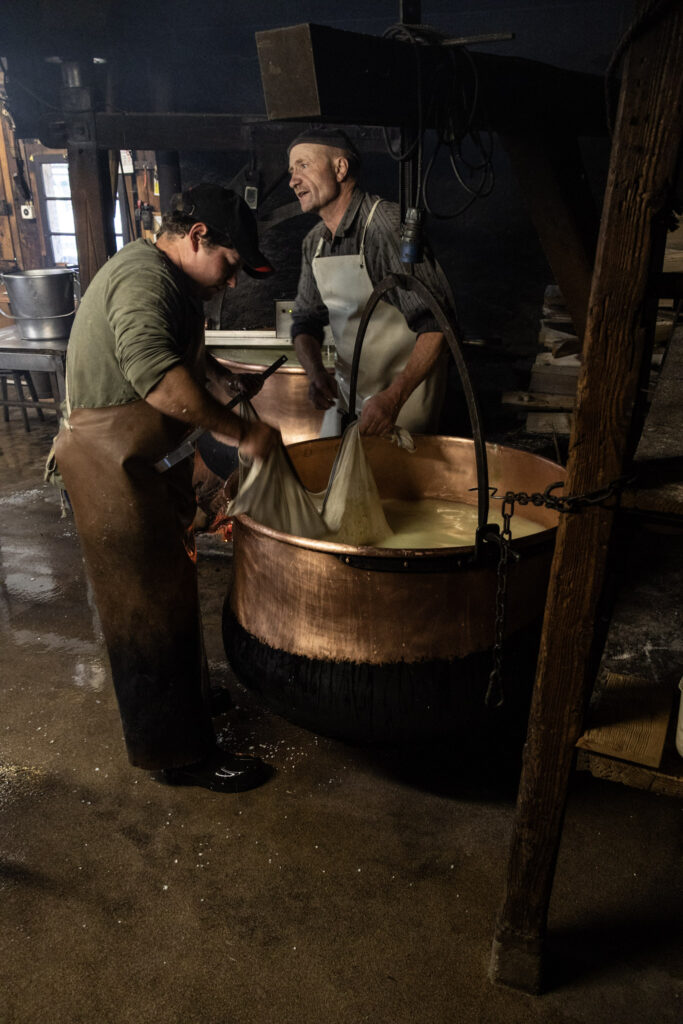
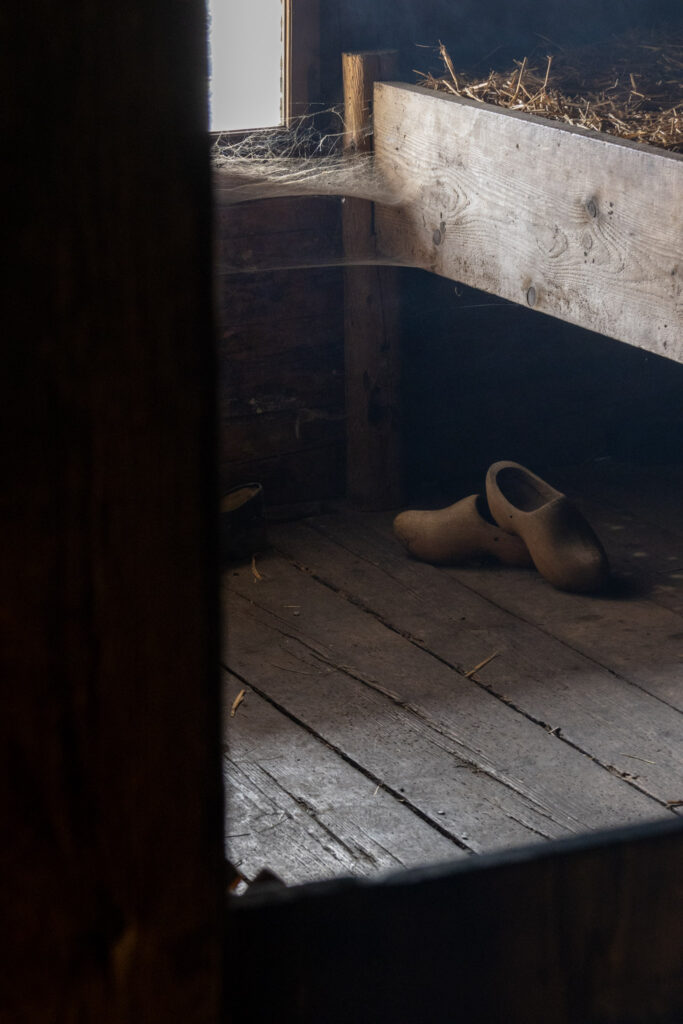
“Everything that is ancestral requires more quality control,” the cheesemaker says, his fingers digging into a spongy, tofu-like block of freshly made cheese. He takes a break to cough into his shoulder before continuing to shovel the bulging substance into wooden cheese molds. After tightly knotting a cheesecloth with the help of his red-faced colleague—sweat dripping from his brow—the cheesemaker crosses the small room in rubber rain boots. He crouches below a copper cauldron brimming with fresh milk to add more wood, keeping the crackling fire alive.
The small chalet atop the Moléson mountain overlooking Gruyères has been in business since 1686. We were lucky to catch a demonstration during the opening weekend of Alpine season – from May to end September, when cows and goats are brought up to high altitudes to graze in pastures with herbs differing from those in the valleys. Cheese made year-round in Switzerland is known as mountain cheese, whereas the traditional Alpine production was inscribed on UNESCO’s list of intangible cultural heritage in 2023.
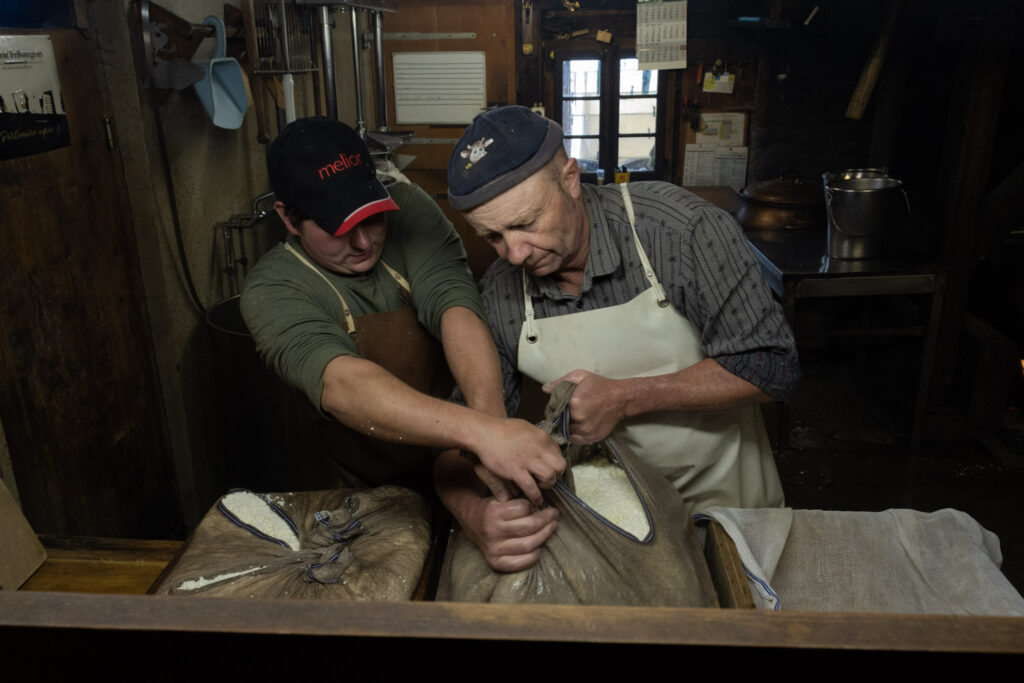
Visiting the fromagerie is possible by bus from the Gruyères train station (stop “Moléson-sur-Gruyères”). The process of checking the cheese curds and transferring them to molds takes place at 10:00 a.m., with a 15-minute film detailing the Alpine cheesemaking season beginning at 09:45.While the demonstration is in French, interpretation in English can be made available upon request.
Reserve your session: https://www.moleson.ch/en/fabrication/ | Address: Place de l’Aigle 12, 1663 Moléson-sur-Gruyères
Prices in 2025:
- Up to 5 years old: free
- 6 to 15 years old: CHF 3.00
- 16 to 63 years old: CHF 5.00
- From 64 years old: CHF 4.00

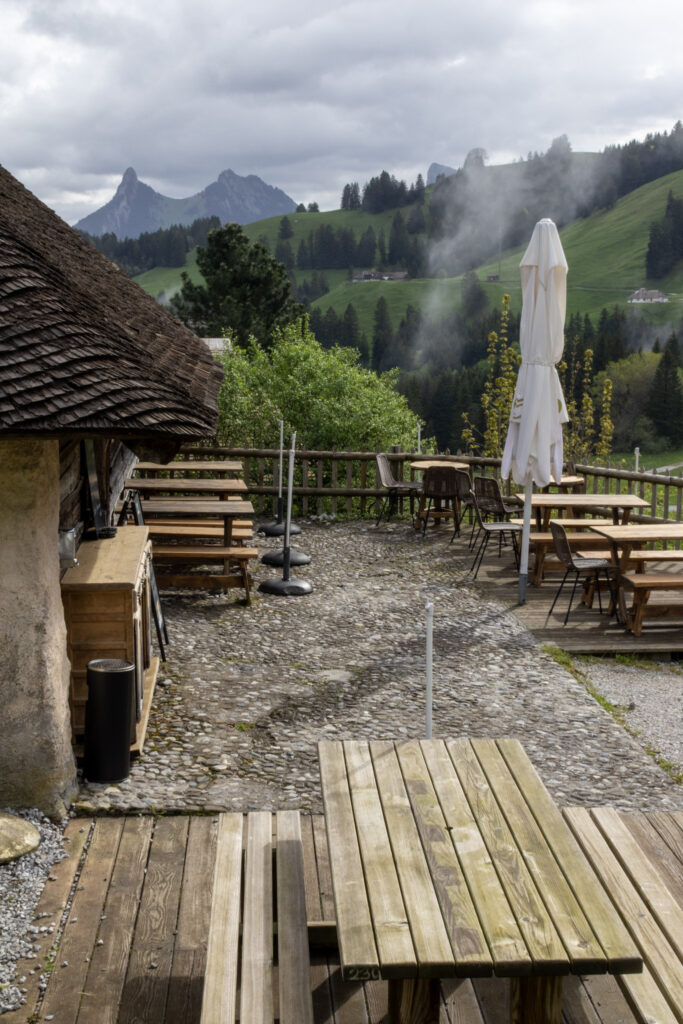
And FDA-approved cheese production at La Maison du Gruyère
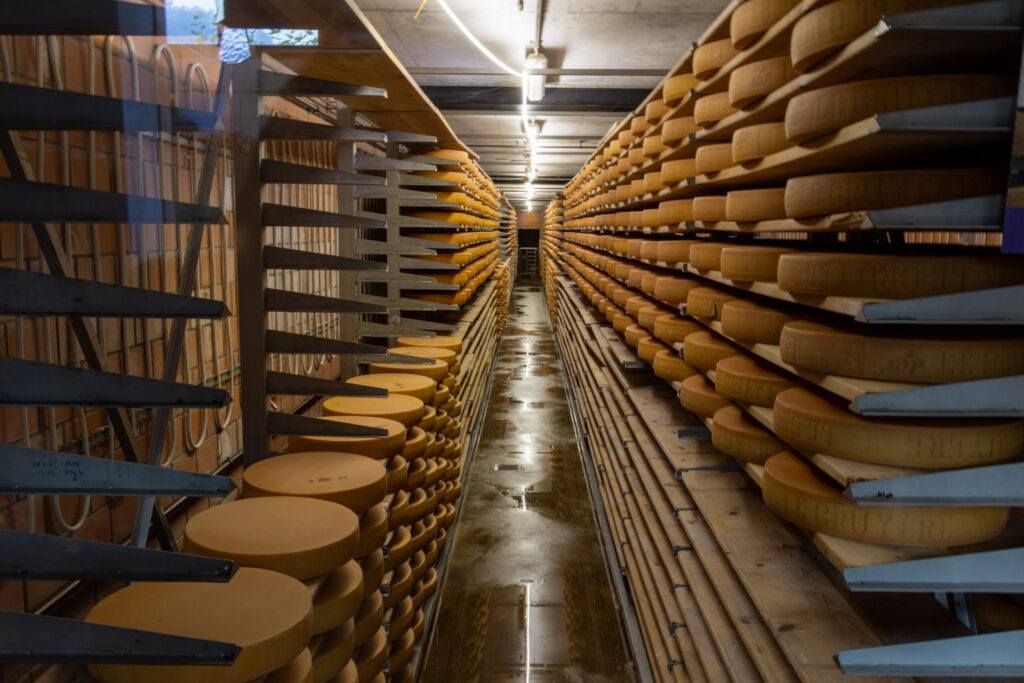
Gruyère—a creamy Swiss cheese with nutty or earthy flavors depending on its age—is a staple in fondue and features in classic dishes like French onion soup and the croque-monsieur, a toasted ham and cheese sandwich (not to be confused with the croque-madame, which adds a fried egg on top). Switzerland produces approximately 29,000 tonnes of Gruyère each year.
Like the Euro Cup or Geneva’ s Escalade celebration, Gruyère has been a point of rivalry between Switzerland and neighboring France, a country which counts Gruyère among its 1,000 cheeses. Both countries sought out the prestigious Appellation d’Origine Protegée (AOP), a European certification that safeguards food produced, processed, and prepared in a specific region using traditional methods. The label, much like an original Gucci handbag, guarantees authenticity and protects traditional known-how from imitation.
According to the Guardian, the Swiss argued that Gruyère has been a part of their culinary heritage since the 12th century, with half of all production taking place in the canton of Fribourg. Furthermore, it was found that most of French Gruyère was aged outside of the area in which it was produced, disqualifying it from full AOP recognition.
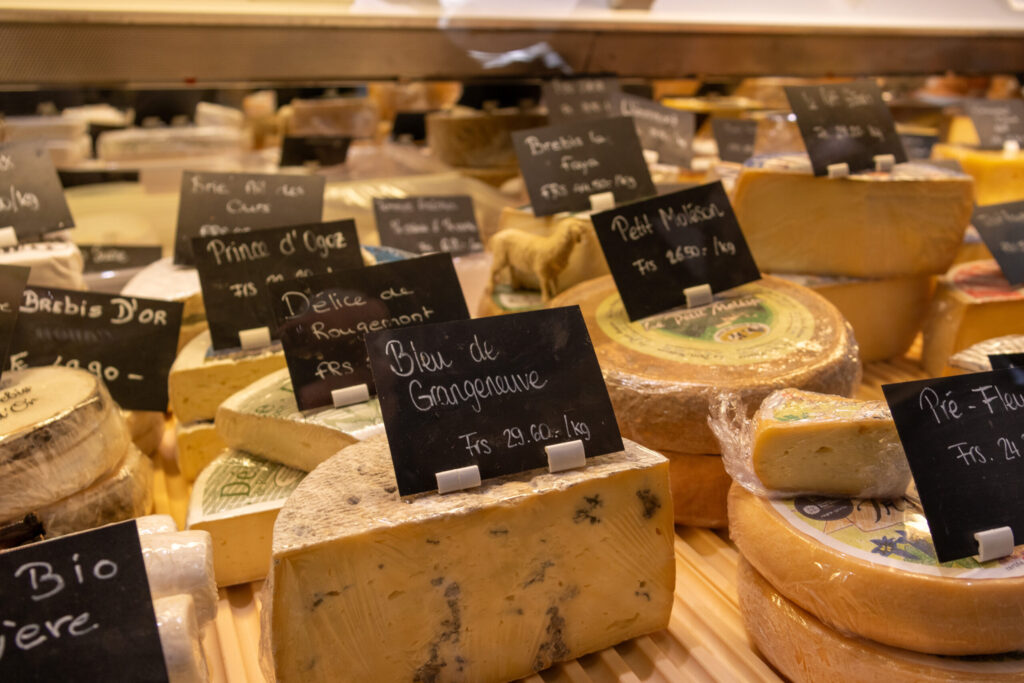
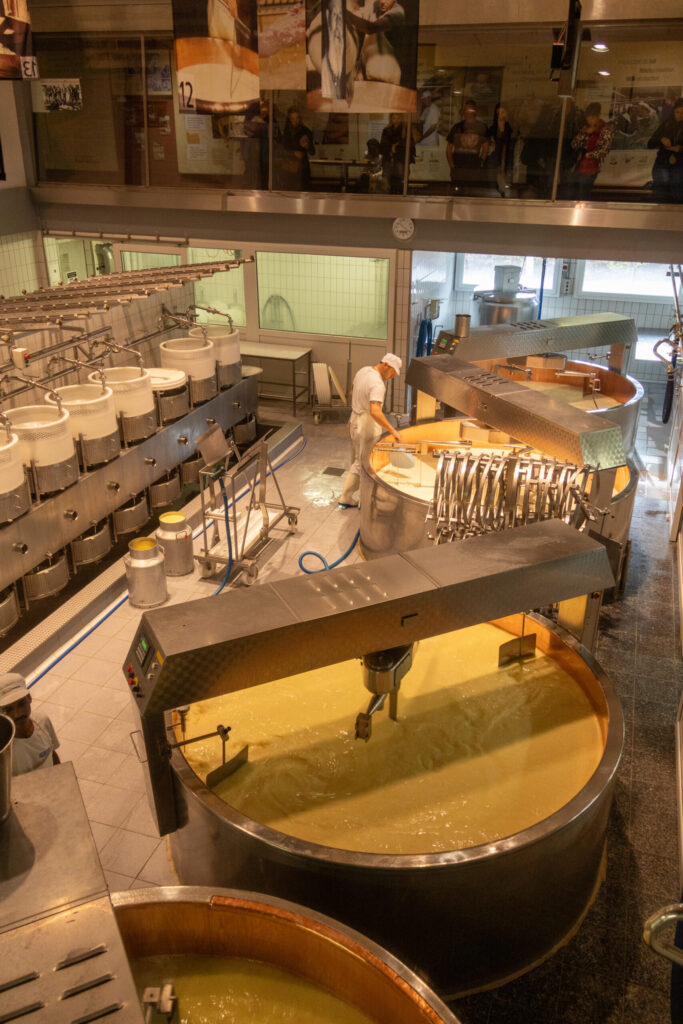
Visitors to the Maison du Gruyère can watch the cheesemaking process unfold every day from 09:00 – 12:30 through glass-paneled workshops- the AOP stamp proudly imprinted on each cheese wheel. The cheese factory includes an interactive visit through the eyes of a cow named Cerise, or Cherry, with spots to smell different varieties of Alpine herbs and flowers that contribute to the earthy flavors of Gruyère.
If time permits, I suggest visiting both the Fromagerie d’alpage de Moléson and the Maison du Gruyère to compare artisanal and mass cheese production. On a personal note, I felt the chalet in Moléson to be more intimate, with French spoken with an accent only heard in mountainous regions. The Maison du Gruyère caters to international tourists, with an audio guide in several languages and within close distance from the train station.
Address: Pringy, Pl. de la Gare 3, 1663 Gruyères | Website: https://www.lamaisondugruyere.ch/homepage-en/
Prices in 2025 (reservations are only possible for groups of 10 or more):
- Adult: CHF 8.00
- Students and seniors: CHF 6.00
- Family rate (2 adults + children up to age 12): CHF 12.00
- Combined ticket with the castle of Gruyères for the price “Adult”: CHF 17.00
HR Giger Museum
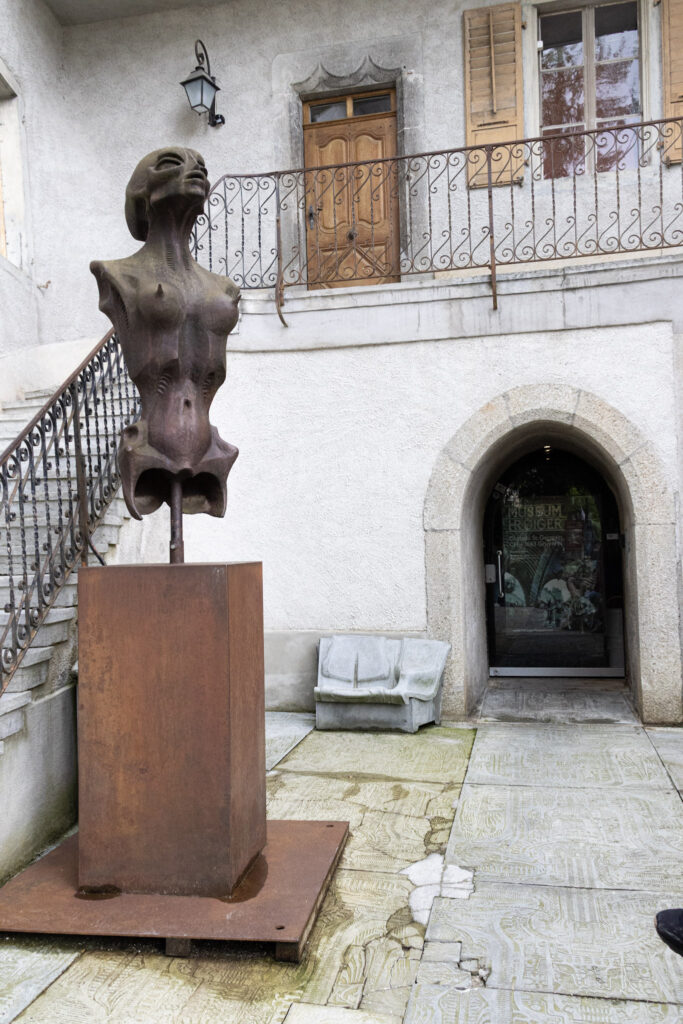
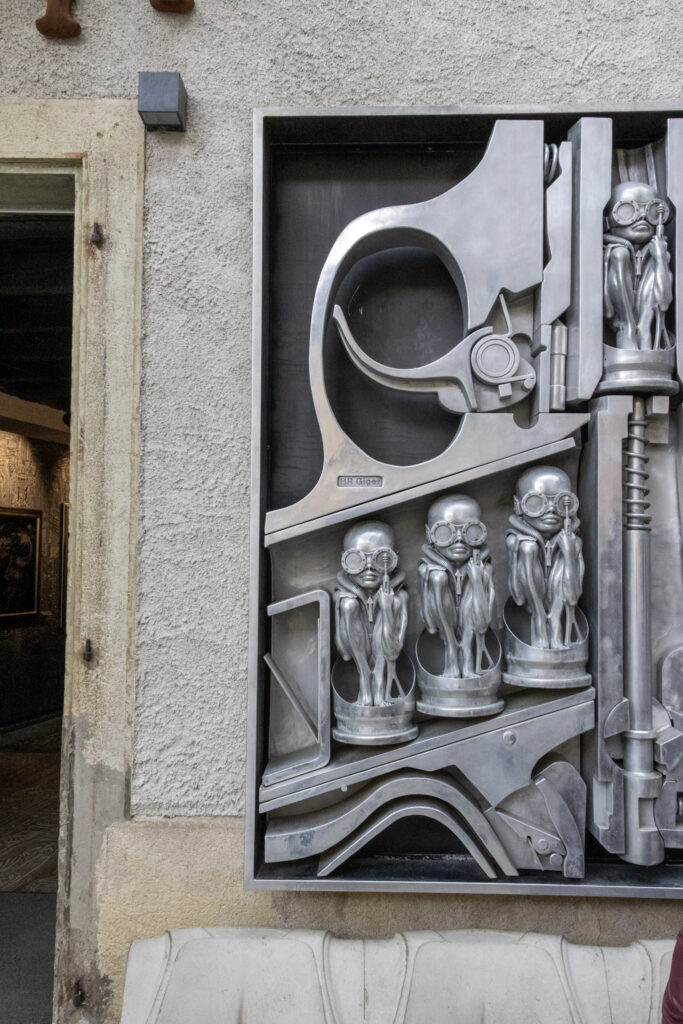
Amid cobblestones, medieval architecture and wooden chalets promoting steaming pots of fondue, one destination within the village catches visitors by surprise: the HR Giger Museum. Swiss artist Hans Ruedi Giger was born in Chur, located in the eastern corner of Switzerland. While his father wished his son to study pharmacy, Giger desired making dark, otherworldly art.
Giger’s work would go on to earn international acclaim—his design for the creature in Ridley Scott’s Alien won him an Oscar in 1980. Today, a château-turned-museum, which Giger purchased in 1997, showcases his hauntingly surreal creations. Sci-fi fans will thoroughly enjoy this museum, as well as the bar across the street designed by Giger himself.
Address: Rue du Château 2, Château St-Germain, 1663 Gruyères | Website: https://www.hrgigermuseum.com/en/
Château de Gruyères
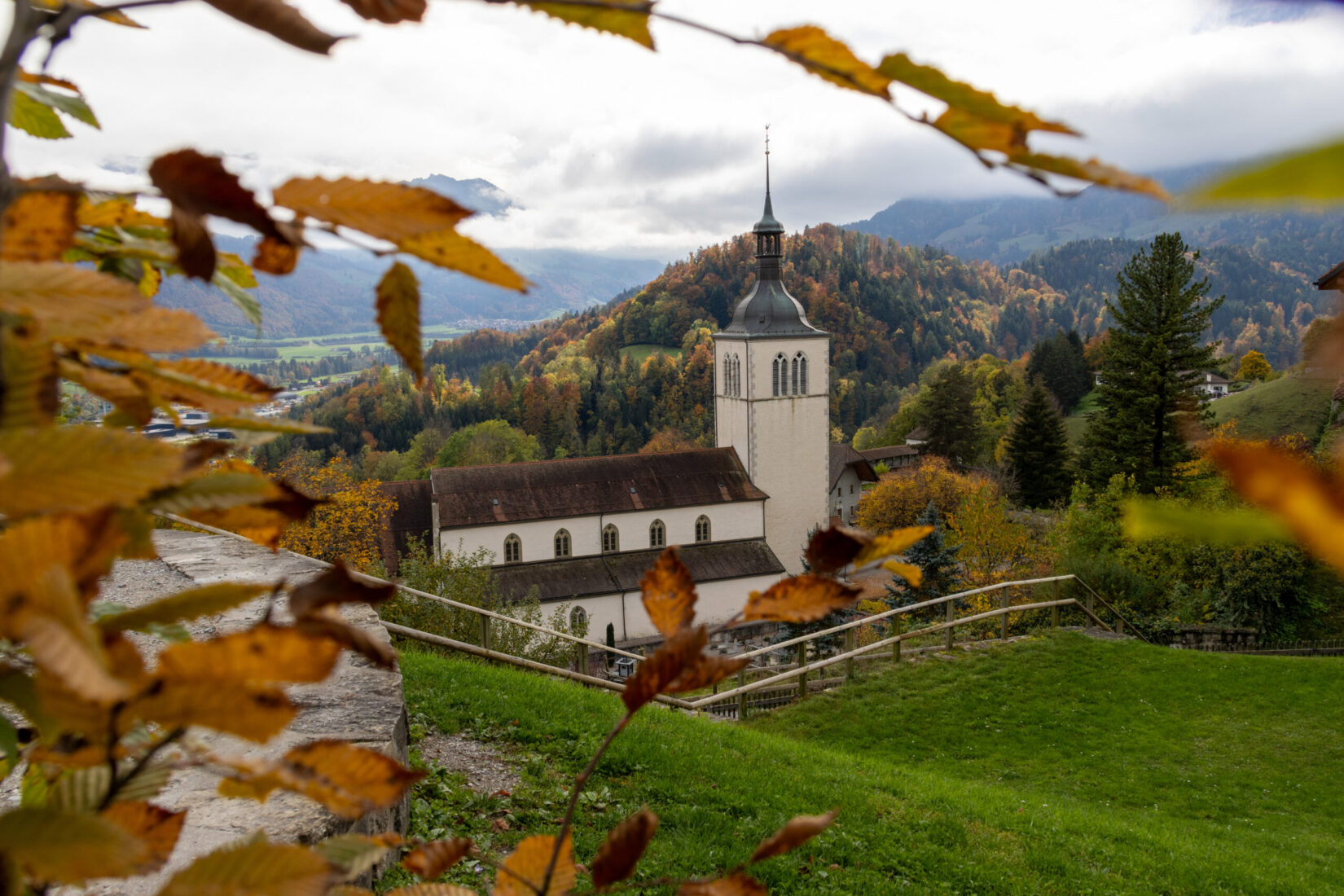
The Château de Gruyères was my husband and I’s first stop in 2020 when, during peak COVID season, we decided to do a road trip across the country instead of traveling internationally. Atop a hill, the castle overlooks the Saint-Théodule church framed by the Saane Valley and surrounding Alps. The small church has proved resilient throughout its history, surviving two fires. The cloche de l’agonie, or “bell of agony” which survived a fire in 1856 rings throughout the medieval village to announce the passing of a community member.
The castle itself is mentioned for the first time in 1244, serving as the home of the Counts of Gruyère. Like most conundrums in Switzerland, the fall of the Gruyère dynasty was financial: by the 1500s, mounting debt forced the family to cede their lands to the cantons of Bern and Fribourg.
In 1849, the castle was auctioned to brothers John, Antoine and Daniel Bovy, who transformed the castle into an artists’ colony, inviting painters to join them in a quest to reinvent the stone interiors. The tradition of a castle-turned-artist in residence remains intact, with works from up-and-coming artists continuously exhibited.
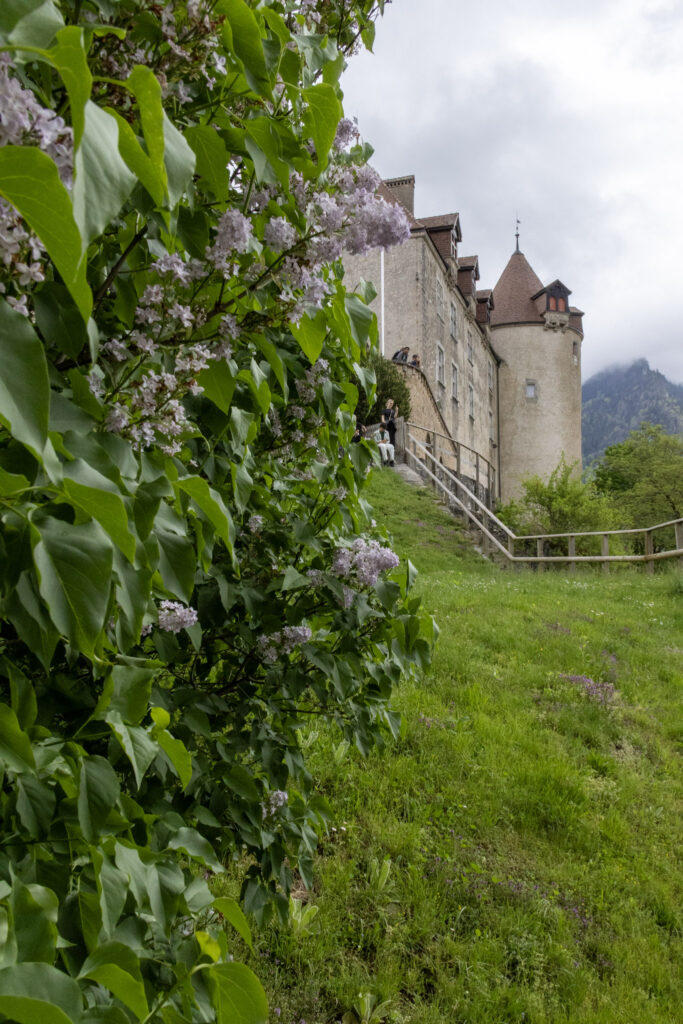
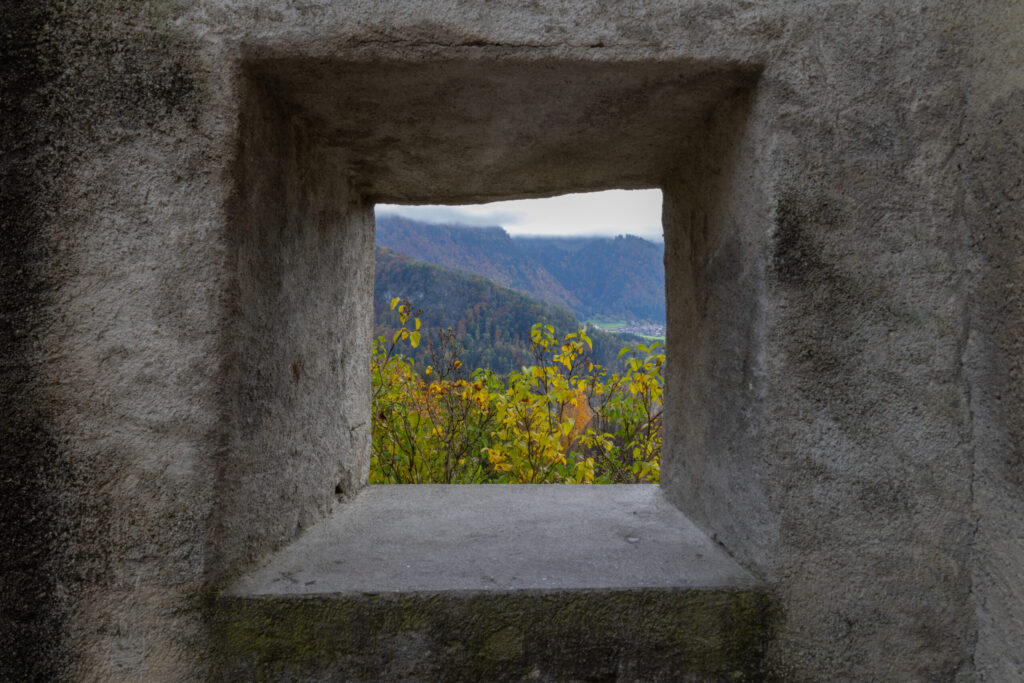
One of the most visited sites in Switzerland following the Château de Chillon, Gruyères Castle is also claimed to be one of the country’s most haunted. Legends of Swiss German phrases “Es tut mir leid” (“I’m sorry”) and “Lohn Si mi in Ruh” (“Leave me alone”) are rumored to have been heard throughout the corridors. In addition, a case with a severed hand on display has fed old wives’ tales for years. An anthropological research project in 2003 placed fact to fiction, confirming that the mummified relic was dated back to the 3rd century. According to Swiss Info, the export of mummies was outlawed in the 18th century, and traders often smuggled in limbs.
Address: Rue du Château 8, 1663 Gruyères | Website: https://www.chateau-gruyeres.ch/en/experience-the-legend/
Prices in 2025:
- Adults: CHF 13
- Seniors, students: CHF 9
- Children (6 to 15-years-old): CHF 5
- Children under 6: Free

Love this! Especially the part about the haunted castle. And that the Swiss traders economized the just smuggled in limbs. LOL! Also, that’s so interesting about the artist who created the Alien movie creature!
You two sure did a lot on your trip there! Looks and sounds so lovely and fun!